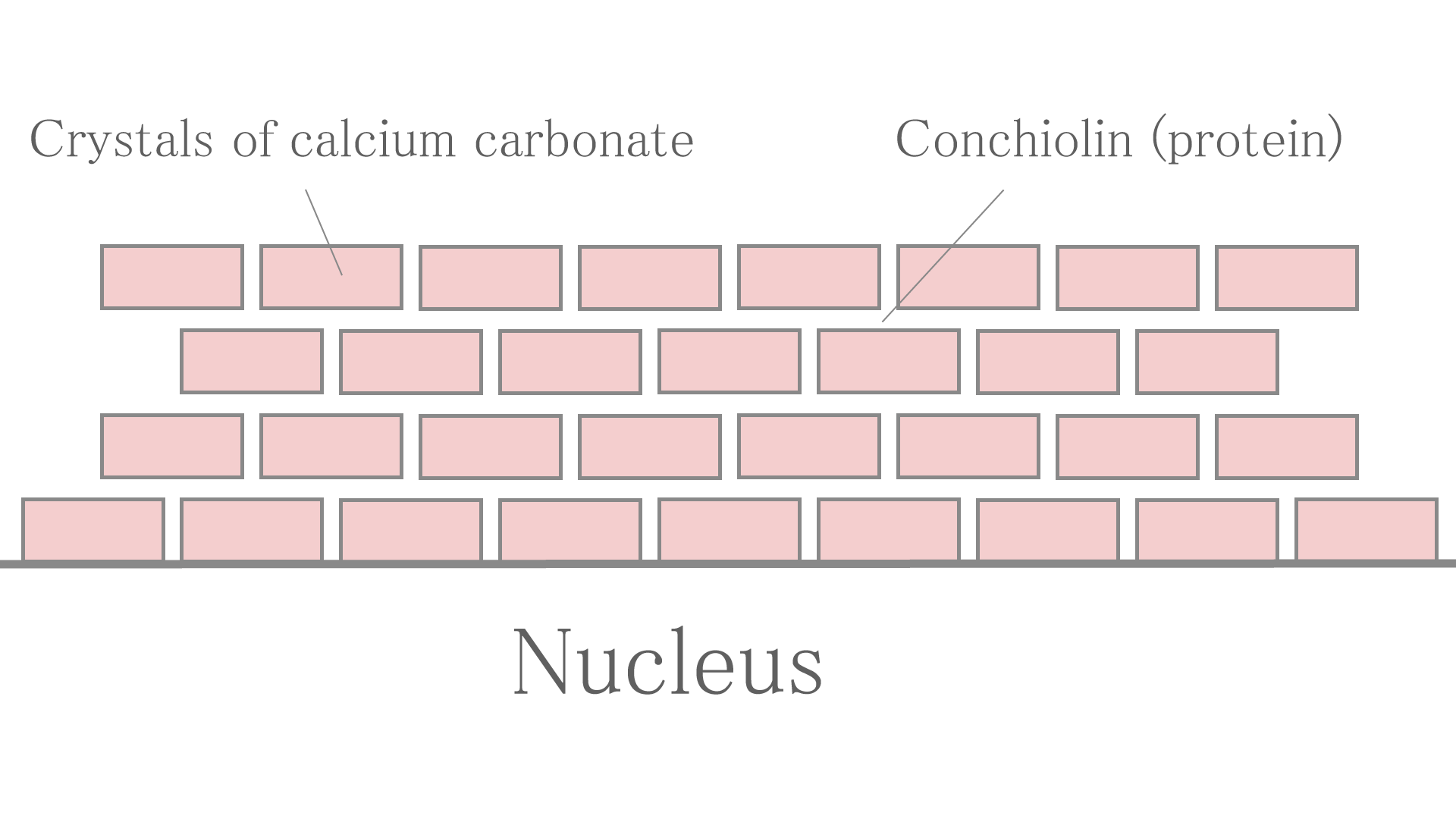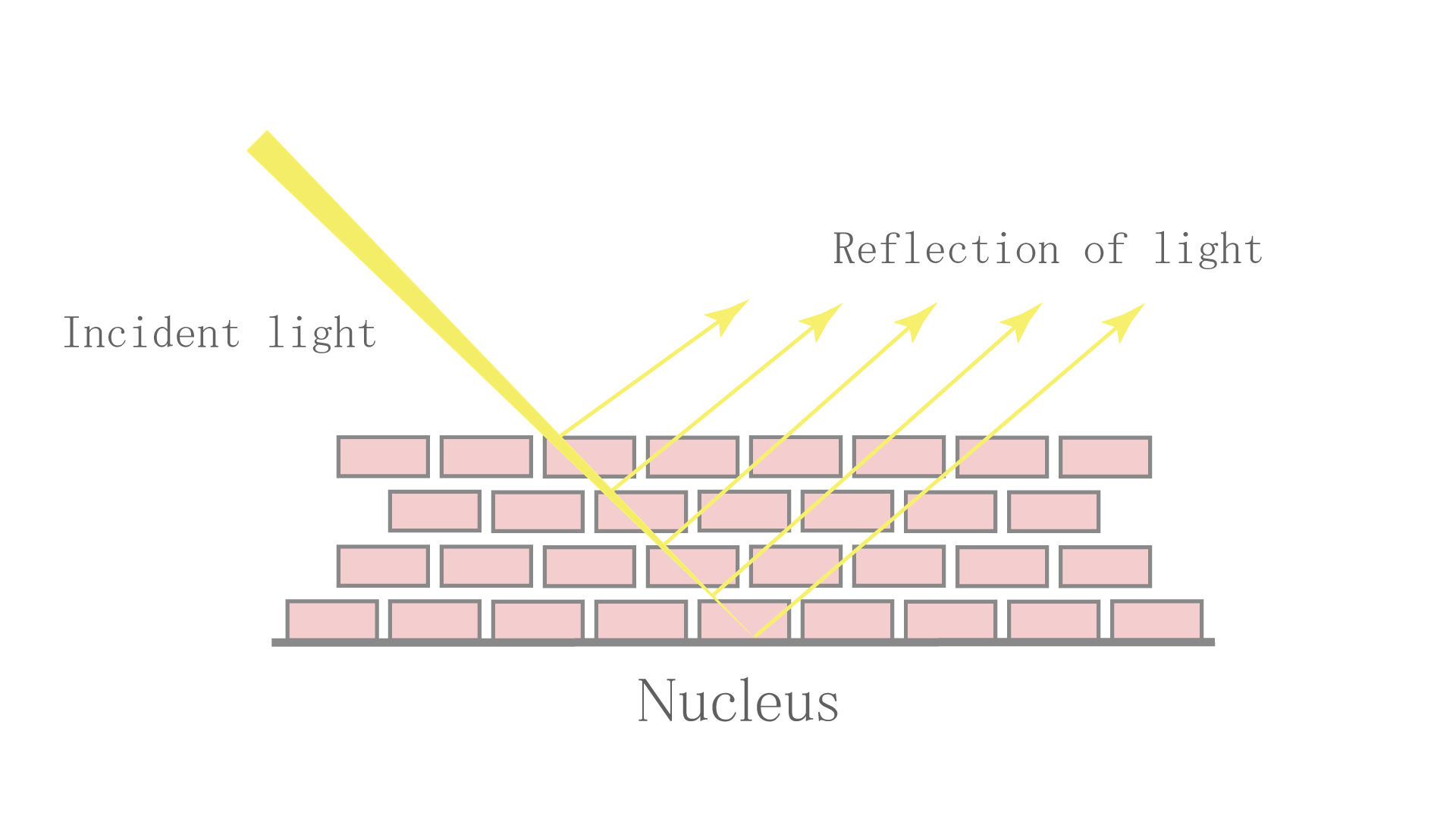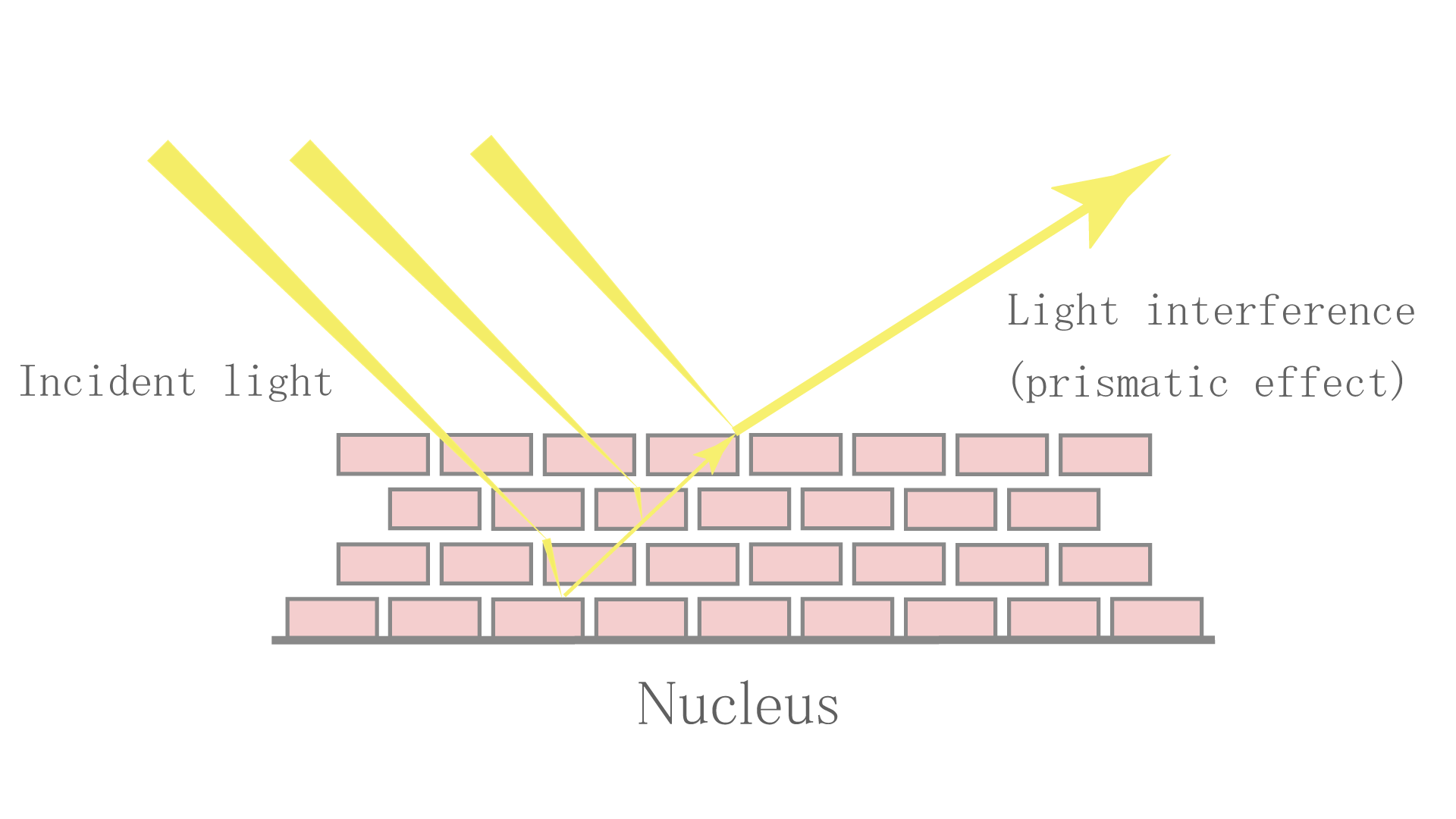
About Teri (luster) of pearls
The luster in pearls is called Teri. Teri is one of the essential elements in choosing a pearl.
We cultivate pearls with a special emphasis on "Teri" and "Maki".

Teri
poor
Teri strong
Comparison of the Teri
There are individual differences in the Teri of each pearl, and the stronger the Teri, the more rare it is.
If you look at the figure, you can see that the further to the right you go, the better the Teri becomes. It's hard to tell when you look at just one grain, but when you compare them, it's easy to see. Simply put, the more clearly visible the round pearl in the center of a pearl, the better the Teri is and the more powerful the pearl is.
Structure of a pearl
The structure of the pearl is composed of a number of calcium carbonate crystals stacked brick by brick, as shown in the figure. A protein called conchiolin in between plays the role of a glue and forms the layer of pearls.
The thickness of the first layer of pearl is about 0.4 microns , which is formed by overlapping more than 1,000 layers.

The reason for the pearl's Teri
When light strikes the pearl, reflection occurs on the surface and in each layer of the pearl's interior. The more regularly the pearl layers are aligned at this time, the more reflected light there is and the better the luster. On the contrary, if the pearl layer is uneven, the light will reflect diffusely and the luster will be weakened.


Pearl interference color
The phenomenon in which two or more light waves overlap at the same point and strengthen or weaken each other is called interference. Interference in pearls is a phenomenon called "multilayered interference", which produces pink or green interference colors like soap bubbles depending on the way the light hits the pearl. There is a strong correlation with the elements of the roll, and the thicker the layer of pearls, the stronger the interference color.


As shown in the photo, pearls with extremely strong Teri have a clear core in the center and a strong interference color.
A pearl's Teri is the result of a combination of light reflection and light interference, which causes the pearl to shine from the inside out.
The Importance of the Season of Harvest
Remember, it's harvest time. When snow dances over the Yura Peninsula and the water temperature drops the most during the year, the Akoya shells accumulate nutrients and form a layer of pearls with a fine crystalline structure on the inner surface. This phenomenon called "Kesho-maki" has a great influence on the quality of pearls. The surface is smoother and more beautiful and shiny due to the Kesho-maki.
Every year, the bidding for pearls by fishing cooperatives begins in mid-December. Since we don't sell pearls for bidding, the timing of beach-raising can be determined freely according to the water temperature environment of the year. Their cultivation techniques, cultivated through knowledge and years of experience, form the foundation of the Tensei pearl.







